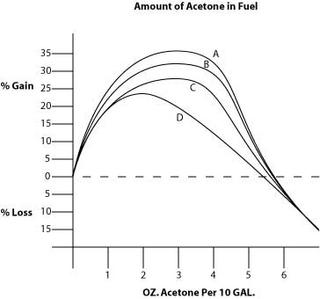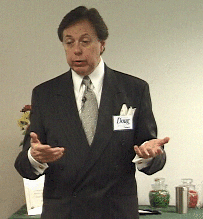Our New Book
In 1985 I and a colleague, Noel McInnis, wrote a book entitled The Power of Commitment, which we are now thoroughly revising for publication early next year. In our book we relate the experience of a mother whom we fictitiously named “Susan Bradford”.
Susan came into the kitchen on a very windy morning to make breakfast for herself and her three-year-old daughter, Amanda, and found the child lying semiconscious on the floor. Amanda had been awakened by a now receding storm, and had come to the kitchen to play. An open, empty pill bottle lying beside her told the rest of the story.
Susan quickly read the label on the bottle, which said that death from overdosing could occur within half an hour of loss of consciousness. Though Susan was dressed only in a short negligee, she put the empty bottle in her purse, scooped Amanda into her arms, and ran to the car.
When the car would not start, Susan dashed back to the house to call a neighbor. The telephone was dead. Local service had been disrupted by a fallen tree.
Susan raced to the car, grabbed her now unconscious child, and ran to the nearby freeway. Although scantily clad with her hair still in curlers, she was unconcerned about either the chilling wind or her appearance. She stepped onto the freeway to wave down a car, and got a ride immediately. Amanda was at the nearest hospital emergency room a few minutes later.
The secret of Susan Bradford’s success, like all successes that are empowered by commitment, was her demonstration of what we call “The Ultimate Principle of Commitment”: allow no obstruction of intention to prevail. For example, when Susan was later asked what she would have done if nobody had stopped, she said, “I’d have undressed, laid down on the freeway – done whatever it took until somebody did stop.”
When she was further asked what went through her mind as she read the label on the empty pill bottle, “I immediately saw myself in the hospital emergency room with Amanda. It never occurred to me that I wouldn’t make it. I thought of nothing else but getting her there, and kept doing whatever was necessary until that’s where I was.”
Susan Bradford neutralized every obstruction to her timely arrival at the emergency room by consistently and persistently taking the next step to that intended outcome, rather than resisting obstacles to her present steps. Thousands of mothers and fathers have had similar experiences with poisoned and severely-injured children, and their stories are essentially the same: nothing was allowed to prevail over their intention to get immediate emergency aid – because their intention was committed.
Commitment empowers us to alter our outer circumstances via focused inner intent, and thus create intended results and outcomes no matter what obstructions one encounters. Though the power of commitment is no more visible than that of an electric current, the evidence thereof is clearly apparent in the lives of committed individuals. Like electricity, commitment produces measurable results, some of which results are quite spectacular, as when a mother weighing 120 pounds lifted the corner of an automobile off the ground to free her child caught underneath.
The dynamism of commitment is poorly understood with conventional thinking, which views consciousness as a programmed mental mechanism that enables us to figure out how to forcibly make happen what we intend. Commitment is better understood from the perspective of a new paradigm that views consciousness as an operational field of influential awareness, whose dynamism allows to happen what we intend. This newer view of consciousness substantiates our understanding of commitment as a function of intentional empowerment rather than of willful enforcement. Commitment neutralizes obstructions to our intent, rather than pushes us past or through them, thereby allowing the energy of our intent to run its course rather than coercing it to do so.
Commitment is a state of mind that activates, focuses, and amplifies our ability to effect an intended inner change and/or outer change in our contingent circumstances. In terms of the new paradigm view of consciousness, the physical, inter-personal, and societal milieu that surrounds us may be designated as our “situational field”. Our commitments empower us to modify this field regardless of its obstructions to our intent.
To intend a change within our situational field is to set in motion a tendency toward an outcome that will modify our situational circumstances. Realized outcomes are to our intentions as grown plants are to their seeds. Only as we weed out all obstructions to the fulfillment of an intention can its potential outcome be realized. Committing ourselves to an intended outcome allows our intent to run its course as we neutralize the barriers and obstacles in its way.
Commitment empowers intent by selecting which of our intentions are realized, as well as how they are realized. Although each of us has a menu of so-called “good” intentions, most of them remain as unrealized as our annually renewed New Year’s resolutions. This is because an intention, in the absence of commitment, is at best marginally productive of the outcome to which it aspires.
Until we are committed to the realization of an intended outcome, our tendency is instead to empower its obstruction. Non-commitment allows obstruction of our intent to prevail. Commitment allows the outcome of our intent to prevail. Commitment “raises our allowance” by empowering our ability to effectuate change.
Committed intent is analogous to a dedicated flight plan. We can be off-course of an intended outcome 95 percent of the time, like an airplane that is constantly being deflected from its course by the obstructive influence of atmospheric turbulence. Yet when we are as committed to making continuous course corrections as is the pilot of an airplane, we likewise mindfully direct ourselves to our dedicated flight plan’s intended outcome.
To be “mindful” of something is to be knowingly discerning of, responsive to, and directive of it. Accordingly, to be mindfully committed is to knowingly maintain a non-divertible intention to realize an intended outcome. A “non-divertible” intention is not one in which there is no deviation from its course. It is rather an intention in reference to which, when we do become diverted, we invariably redirect ourselves toward its prescribed outcome.
Collectively, therefore, our commitments constitute the command post from which we structure our life experience by maintaining a limited number of mutually compatible non-divertible intentions. Since some intentions work at cross purposes with others, it is only to compatible intentions that we can non-divertibly commit. Being committed, therefore, requires us to be mindful of mutually compatible intentions.
In sum: commitment empowers intention, intentions prescribe outcomes, and committed intent is analogous to the dedicated trajectory of a flight plan. Accordingly, we view the dynamism of commitment as a mindful process of “life-trajectory management,” or what some physicists might call the management of one’s “world-line”.
Noel McInnis
Doug Yeaman


